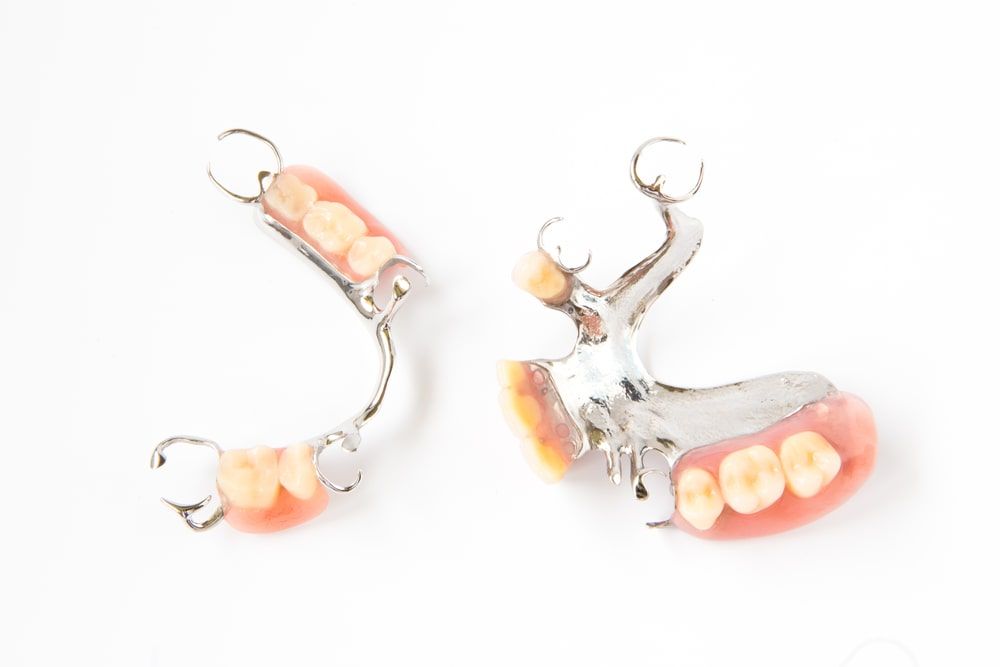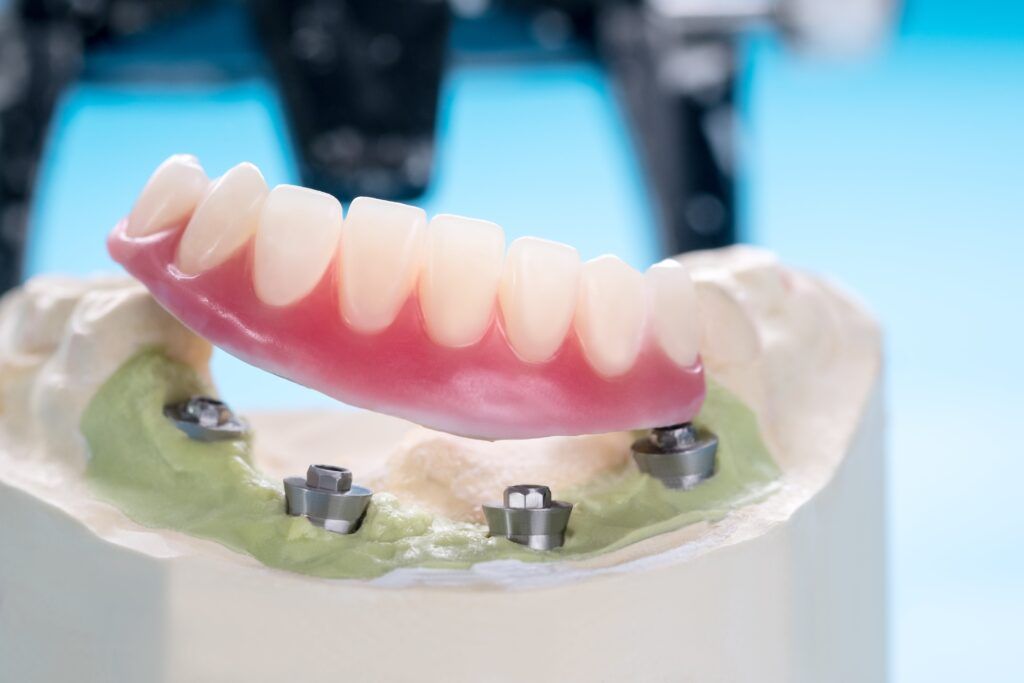When it comes to replacing missing teeth, partial dentures have long been a staple in dental restoration, offering functional and aesthetic solutions. Traditionally, these dentures have relied on clasps and frameworks that attach to natural teeth, but advancements in dental technology have introduced a more modern approach: implant-supported partial dentures. This innovative option combines the reliability of traditional methods with the enhanced stability and comfort provided by dental implants. In this blog, we will explore how implant-supported partial dentures represent a blend of tradition and modernity, delve into their benefits over conventional dentures, and discuss important considerations for those contemplating this treatment. By understanding both traditional and modern approaches, patients can make informed decisions about their dental health that best suit their needs and lifestyles.
In This Blog:
- Understanding Traditional Partial Dentures
- The Rise of Implant-Supported Partial Dentures
- Comparing Costs and Procedures
- Suitability and Patient Considerations
Understanding Traditional Partial Dentures
Traditional partial dentures have been a fundamental solution in restorative dentistry for many years, helping countless individuals regain function and aesthetics after tooth loss. These dentures are designed to fill the gaps left by missing teeth and are typically supported by the remaining natural teeth. Here’s a closer look at the components and workings of traditional partial dentures.
How Traditional Partial Dentures Work:
Traditional partial dentures consist of replacement teeth attached to a pink or gum-colored plastic base, which may be connected by a metal framework. These frameworks include clasps that grip around the natural teeth, anchoring the denture in place. This setup allows the partial denture to be removable, facilitating cleaning and maintenance.

Common Materials Used:
- Acrylic: Often used for the denture base, acrylic is favored for its adaptability and color-matching capabilities, which provide a natural appearance.
- Metal Alloys: Chromium-cobalt or nickel-chromium are commonly used for the framework. These materials are chosen for their strength and durability, which are necessary to support the structure of the denture.
Benefits and Limitations of Traditional Partial Dentures:
Here’s a table organizing the benefits and limitations of traditional partial dentures:
| Benefits | Limitations |
| Cost-Effective | Stability and Comfort Issues |
| Less Invasive | Potential for Damage to Natural Teeth |
| Quick Fabrication and Repair | Aesthetic Concerns (visible metal clasps) |
| May require frequent adjustments or replacements |
This table provides a clear and concise comparison of the pros and cons associated with traditional partial dentures, helping patients and dental professionals evaluate their suitability and limitations.
Understanding these key aspects of traditional partial dentures sets the stage for appreciating the advancements brought by implant-supported partial dentures, which address many of the limitations found in traditional methods. As we explore newer options, it becomes clear how dental technology has evolved to provide more reliable and comfortable solutions for patients.
The Rise of Implant-Supported Partial Dentures

As dental technology has advanced, implant-supported partial dentures have emerged as a superior alternative to traditional partial dentures, especially for those seeking a more stable and long-term solution. These innovative devices utilize dental implants, which are surgically placed into the jawbone, serving as a robust foundation for attaching the dentures.
Dental implants are small titanium posts that are surgically embedded into the jawbone. Over time, these implants integrate with the bone in a process known as osseointegration. This integration provides a stable and durable anchor for the partial denture, which can be attached via a connector known as an abutment.
Why Choose Implant-Supported Partials?
Choosing implant-supported partial dentures often comes down to their longevity and the quality of life benefits they offer. While the initial investment may be higher than traditional dentures, the long-term advantages include reduced maintenance costs, fewer replacements, and overall improved oral health. The benefits of implant-supported partial dentures include:
Improved Stability and Comfort:
Unlike traditional partials, which may slip or cause discomfort, implant-supported dentures are securely anchored, offering significant improvements in stability and comfort.
Preservation of Jawbone and Adjacent Teeth:
Dental implants help to maintain jawbone density and structure, preventing the bone loss that often accompanies tooth loss. Additionally, they do not require support from adjacent teeth, reducing wear and potential damage.
Enhanced Chewing Ability and Speech Clarity:
The secure fit of implant-supported dentures allows for better chewing efficiency and clearer speech, as the dentures do not shift or slip.
Aesthetic Improvements:
Implant-supported partials can be designed without visible clasps, offering a more natural and appealing look.
Implant-supported partial dentures represent a significant advancement in the way partial tooth loss is treated. They offer a more effective and satisfying solution by blending modern dental technology with the traditional concept of dentures, providing patients with a restoration that feels more like natural teeth. As we continue to move forward, these modern solutions highlight the significant strides being made in dental prosthetics, making it an exciting time for both patients and dental professionals.
Comparing Costs and Procedures
When considering implant-supported partial dentures, it’s important to compare them not only in terms of benefits and drawbacks but also regarding the costs and procedural differences associated with traditional partial dentures. This comparison can help potential patients understand the financial and clinical commitments involved in choosing a dental restoration method.
Procedural Differences:
Here’s a table outlining the procedural differences between traditional partial dentures and implant-supported partial dentures:
| Aspect | Traditional Partial Dentures | Implant-Supported Partial Dentures |
| Procedure | – Dental impressions taken- Denture crafted to fit with clasps to natural teeth | – Surgical placement of implants- Attach denture to implants after healing |
| Timeframe | – Several weeks for fabrication and fitting | – Several months, due to required healing time for implant integration |
| Invasiveness | – Non-invasive, no surgery required | – Invasive, involves surgery and potentially additional procedures like bone grafts |
| Initial Adjustments | – Frequent initial adjustments for fit and comfort | – Minimal adjustments post-healing, as implants provide stable support |
This table provides a clear comparison of the key procedural aspects of both types of dentures, helping potential patients understand what to expect from each treatment option.
Cost Comparison:
Here’s a table organizing the cost comparison information between traditional partial dentures and implant-supported partial dentures:
| Cost Aspect | Traditional Partial Dentures | Implant-Supported Partial Dentures |
| Initial Costs | Generally lower due to simpler manufacturing and non-surgical procedures | Higher due to surgical procedures and high-tech materials |
| Long-Term Costs | May incur additional costs over time for repairs, adjustments, and replacements. Potential costs from damage to natural teeth and bone loss. | Generally lower long-term costs due to greater durability and fewer replacements. Preserves jawbone health. |
| Factors Affecting Cost | – Number of teeth replaced- Material choices- Adjustments and maintenance | – Number of implants- Material choices- Need for preparatory procedures such as bone grafts |
This table provides a structured comparison of costs associated with traditional and implant-supported partial dentures, highlighting both initial and long-term financial considerations, as well as factors that influence overall costs.
In summary, while implant-supported partial dentures come with a higher initial cost and involve more complex procedures, their long-term benefits and cost-effectiveness can be more advantageous for many patients. It’s important for those considering this option to discuss with dental professionals to fully understand the financial commitments and procedural expectations involved.
Suitability and Patient Considerations
When deciding between traditional and implant-supported partial dentures, it’s crucial to consider not only the technological aspects and costs but also the suitability and specific needs of the patient. This section explores who might be a good candidate for implant-supported partial dentures and the factors that influence this decision.
Who is a Good Candidate for Implant-Supported Partial Dentures?
- Adequate Jawbone Density: Successful implant placement requires sufficient bone density to support the implant. Patients with diminished bone mass may need additional procedures, like bone grafts.
- Good Overall Health: Since the procedure involves surgery, patients need to be in good health to handle the anesthesia and recovery process. Conditions that impair healing, such as diabetes or certain autoimmune diseases, may require special considerations.
- Non-Smokers: Smoking can significantly affect the healing process and the long-term success of dental implants, so non-smokers or those who can quit smoking are ideal candidates.
Medical and Dental Health Prerequisites:
- Oral Hygiene: Good oral hygiene practices are essential for the longevity of both traditional and implant-supported dentures. Patients must be committed to regular brushing, flossing, and dental check-ups.
- Periodontal Health: Healthy gums are crucial for the success of implants. Gum disease can jeopardize the stability of implants and the overall health of surrounding tissues.
Lifestyle and Dietary Considerations:
- Eating Habits: Implant-supported partials allow for a more natural diet compared to traditional dentures, but initial dietary adjustments may be necessary post-surgery.
- Lifestyle: Active individuals or those involved in contact sports might need to consider the impact of their activities on the longevity and stability of their denture choice.
Maintenance and Care Routines:
Here’s a table that compares the maintenance and care routines for traditional partial dentures and implant-supported partial dentures:
| Maintenance Aspect | Traditional Partial Dentures | Implant-Supported Partial Dentures |
| Daily Care | – Must be removed and cleaned daily to remove food and plaque. | – Regular cleaning around implants is necessary; does not require removal. |
| Special Tools | – Requires basic dental cleaning tools like brushes and cleansing solutions. | – May require special brushes or floss to clean around implants and under the denture. |
| Regular Check-Ups | – Regular dental check-ups for adjustments and to check the health of the gums and remaining teeth. | – Regular check-ups to ensure the health of the implants and surrounding gums. |
| Adjustments | – Periodic adjustments needed to accommodate changes in the jaw or wear of the denture. | – Less frequent adjustments due to the stability provided by implants. |
| Longevity and Replacements | – May need to be replaced more frequently due to wear and changes in jaw alignment. | – Typically longer-lasting due to better stability and reduced wear on the denture. |
This table outlines key differences in how traditional partial dentures and implant-supported partial dentures are maintained and cared for, highlighting the ease of maintenance and longevity benefits associated with implant-supported options.
Making the Choice:
Choosing the right type of partial denture involves balancing these considerations with personal preferences and lifestyle needs. It’s advisable for patients to discuss thoroughly with their dental professionals to understand the implications of each option. A proactive approach in this decision-making process ensures that the selected dental solution aligns well with the patient’s overall health profile and life circumstances, leading to better outcomes and satisfaction.
Conclusion
In conclusion, implant-supported partial dentures offer a modern solution that effectively merges the reliability of traditional methods with the advancements of contemporary dental technology. While the initial cost and procedural complexity are higher compared to traditional partial dentures, the long-term benefits—such as enhanced stability, comfort, and oral health preservation—make them a compelling option for many patients. As dental technologies continue to evolve, it becomes increasingly important for individuals to consult with dental professionals to fully understand their options. Making an informed choice can significantly improve one’s quality of life and ensure a dental solution that best fits their needs and lifestyle.

